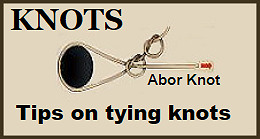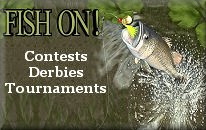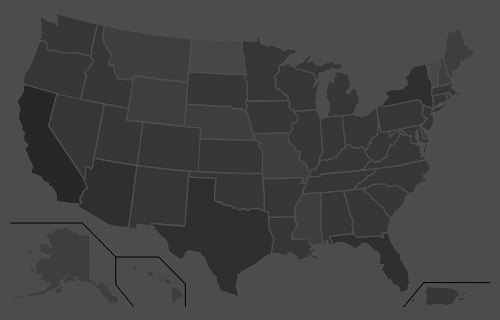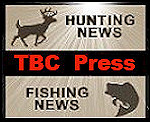“Our added winter moisture and active calling period led to a very long nesting and hatching season, starting in late April and extending into early summer, with chicks hatching as late as early July,” O’Dell said. “From a population standpoint, we are out of a deficit for the first time since 2001-2002. Quail are starting to pop up in places they haven’t been seen in a while.
“If you’ve never had the chance to experience what Arizona quail hunting built its name on, then this would be the year to get out and enjoy it.”
Meanwhile, hunters should note that the season for Mearns’ quail doesn’t begin until Dec. 4. It’s summer rainfall that plays a key role in nesting success and population numbers of this species. After a spotty and relatively weak monsoon across southern Arizona, these birds are likely to be abundant only in pockets that received sufficient precipitation this summer.
A valid Arizona hunting or combination hunt and fish license is required for all hunters 10 and older. Those hunters under 10 must either have a valid hunting or combination hunt and fish license, or be accompanied by an adult who possesses a valid hunting or combination hunt and fish license. Licenses can be purchased online or at license dealers statewide. A youth combination hunt and fish license (ages 10 to 17) is $5.
The general bag limit is 15 quail per day in the aggregate, of which no more than eight may be Mearns’ quail (when the Mearns’ season opens Dec. 4). The general possession limit is 45 quail in the aggregate after opening day, of which no more than 15 Gambel’s, scaled or California quail in the aggregate may be taken in any one day. After the opening of the Mearns’ season, the 45-quail possession limit may include 24 Mearns’ quail, of which no more than eight may be taken in any one day.
More quail-hunting information can be found on the department’s website at https://www.azgfd.com/Hunting/. Another resource for both new and experienced hunters alike is “An Introduction to Hunting Arizona’s Small Game.” Written by Randall D. Babb, the 196-page, full-color book covers where and how to hunt small game birds (like quail), squirrels, rabbits, ducks and geese. It also includes how to prepare and cook your harvest, with illustrations and recipes. The book can be ordered for $16.95 at www.azgfd.gov/publications.
Finally, hunters should check out O’Dell’s techniques for field-dressing quail at https://www.youtube.com/watch?v=3gRwZAcWzzk.
####
Publishers Notes: OUT OF STATE HUNTERS, FISHERMEN & OUTDOOR ENTHUSIASTS; Due to the Covid 19 pandemic, there could be limitations for OUT of STATE hunters, fishermen and other outdoor enthusiasts to include a 14-day quarantine requirement or negative COVID-19 testing alternative. Please check with the State's Department of Natural Resources BEFORE you travel or apply for the 2020 Fall Hunts.
Disclaimer: The views expressed on this site are that of the authors and not necessarily that of TBC Press
Apply by June 8 for North Dakota 2022 Deer Hunting Permits
Submitted by: TBC Press
Posted on: 05/19/22
The Backcountry Press
The country's premier daily HUNTING, FISHING & OUTDOOR news in the USA and around the globe. Read whats happening in your neck of the woods & beyond.
© 2020 TBC Press - All Rights Reserved Website Design by:
News # 14774
Total deer licenses are determined by harvest rates, aerial surveys, depredation reports, hunter observations, input at advisory board meetings, and comments from the public, landowners and department field staff.
North Dakota’s 2022 deer season is set, with 64,200 licenses available to hunters, down 8,000 from last year.
In total, any-antlered licenses decreased by 150 from last year, any-antlerless by 350, antlered whitetail by 4,150, and antlerless whitetail by 3,700. Antlered mule deer licensed remained the same, and antlerless mule deer licenses increased by 350.
In addition, muzzleloader licenses decreased by 168 and restricted youth antlered mule deer licenses remained the same.
“Epizootic hemorrhagic disease dramatically reduced white-tailed deer numbers along the Missouri River and parts of some western hunting units,” said Casey Anderson, wildlife chief for the North Dakota Game and Fish Department. “As a result, license allocations in some units were dramatically reduced.”
As stated in the 2022-23 chronic wasting disease proclamation, hunters harvesting a deer in units 3A1, 3A2, 3B1, 3C, 3D1, 3E2, 3F2, 4B and 4C cannot transport the whole carcass outside the unit, with the exception that hunters can transport the whole deer carcass between adjoining CWD carcass restricted units.
Also in the CWD proclamation, it is unlawful for an individual to hunt big game over bait, or place bait to attract big game for the purpose of hunting, in deer hunting units 1, 2B, 3A1, 3A2, 3A3, 3A4, 3B1, 3C, 3D1, 3D2, 3E1, 3E2, 3F1, 3F2, 4A, 4B, 4C, 4D, 4E and 4F.
“Last fall, 26 deer were harvested during the hunting season that tested positive for CWD, including three in new units,” Anderson said, while noting they were units 3C, 3D1 and 3E2. “This has consequently altered deer management strategies in those and surrounding units.”
North Dakota’s 2022 deer gun season opens Nov. 4 at noon and continues through Nov. 20.
####
Applicants for North Dakota 2022 regular deer gun, gratis, youth and muzzleloader can apply online through the Game and Fish Department’s website at gf.nd.gov. The deadline for applying is June 8.
A general game and habitat license is required when applying for a deer license. If the applicant has not already purchased one for the 2022-23 season, the license will be added to their cart upon checkout. The applicant has the option of having the general game and habitat license refunded if their deer license is not drawn in the lottery.
Gratis applicants who have previously applied online will automatically have their land description carried forward to this year’s application. However, any changes with land descriptions from last year’s application must be made prior to submitting the 2022 application.
Gratis applications received on or before the regular deer gun lottery application deadline will qualify for an any-legal-deer license. As per state law, gratis applications received after the deadline will be processed based on licenses remaining after the lottery. Generally, only antlerless licenses remain.












